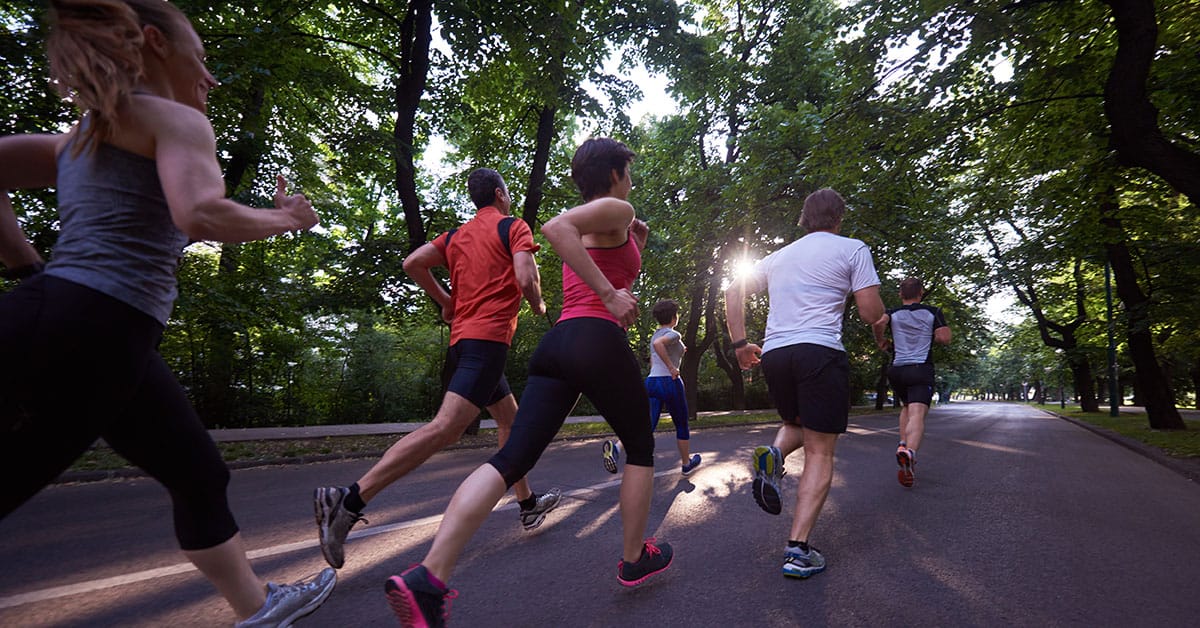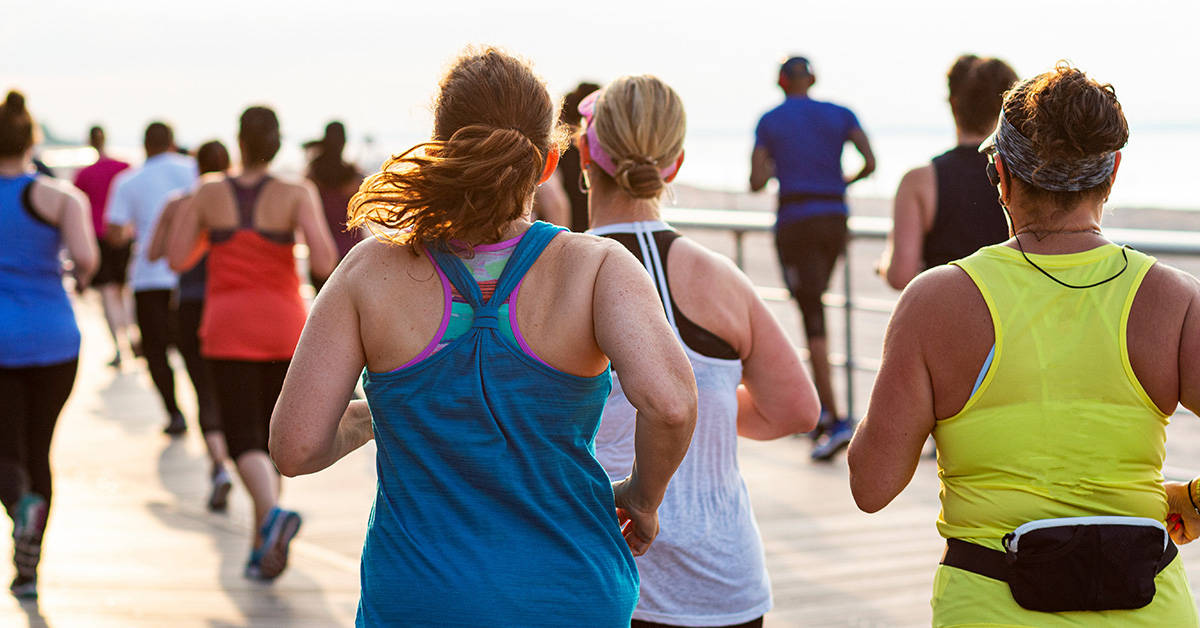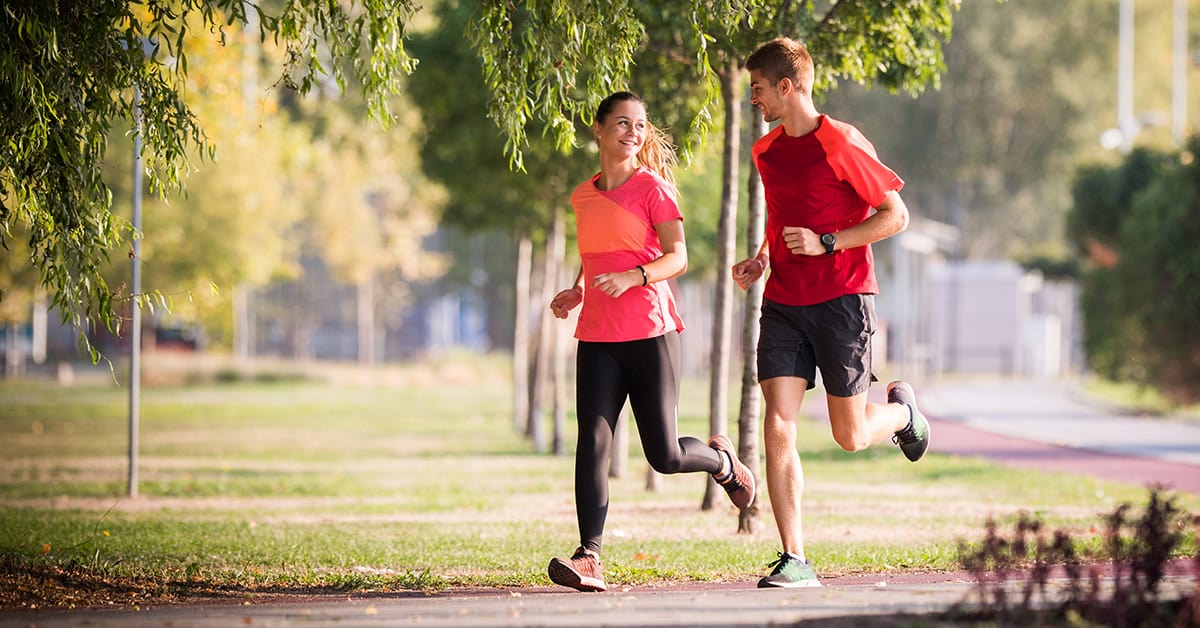Winter is unpredictable and can force your training inside for days or weeks at a time. Although running on a treadmill seems relatively safe, you still need to be mindful of your body. It’s still possible to fall on a treadmill even though your body is stationary; always pay attention! Consumer Product Safety Commission sites treadmills as the most dangerous piece of equipment in the gym, so it’s vital you respect the treadmill by staying vigilant.
Even though a treadmill isn’t a glamorous way to log your miles, it does have some advantages. Treadmills workouts allow you to try workouts that you can’t replicate on track or trail. Similar to running outdoors, there is a proper way to use a treadmill and ways to avoid getting injured. To stay safe and get the most out of your treadmill workout, avoid these common mistakes.
(1) Don’t Skip Your Warm-Up
Warming up is an essential part of any exercise routine. Warmups help loosen your muscles and circulate oxygen-rich blood throughout your body. Too often, people jump on the treadmill and jump straight into their workout. Skipping your warmup increases your chance of injury while detracting from the beginning of your training since your body isn’t in top gear.
A good warmup should last at least five minutes. Jumping jacks are a great way to get the blood pumping through your entire body while activating all of the muscles you use for running. Once you get on the treadmill, you can warm up by slowly bumping up the treadmill speed before hitting your workout pace.
Of course, don’t forget a cooldown either!
(2) Avoid hanging onto the rail
As much as possible, you should refrain from holding onto the handrails. Although it may seem like a way to stabilize yourself, holding onto the rails negatively affects your balance and could result in a fall.
If you are worried about losing your balance, attach the safety clip to your waistband, which will automatically stop the tread if you get too far away from the controls.
Aside from the safety risks, holding on to the rail is detrimental to your running form in the following ways:
Closes airways- The best way to get air into your lungs is by putting your hands above your head. This opens your airways and increases the amount of oxygen you intake. Resting your hands on the rail restricts oxygen intake, limiting how quickly you can recover.
Reduces the incline’s effect- Using the rails of a treadmill takes away the incline’s positive effects. Inclines increase your workout’s effectiveness by adding resistance to make up for the lack of wind resistance you would typically face outside.
Reinforces poor running posture- Running with your hands on the rails is nothing like your natural running form and should be avoided at all costs.
(3) Avoid Using The Wrong Shoes
The correct footwear is always important, no matter the surface. There is little variation to running on a treadmill; this repetition puts more strain on the same spots of your body. When you run outside, your gait and foot strike change as you navigate cracks in the sidewalk, elevation changes, and turns around corners resulting in more diverse impact points. While rolling your ankle on a treadmill is less likely, prolonged running on a treadmill increases the impacts on your knees.
(4) Avoid Running With A Different Stride (stomping feet, looking down, etc)
Instead of the natural motion of your feet propelling you forward, the tread on a treadmill pulls your feet backward (that’s how you stay in the same position). This alteration will adjust your gait, so you’ll need to be more mindful of your gait when running on a treadmill.
Everyone has been at the gym, where the only thing you can hear is that one person who stomps on the treadmill. To make sure you’re not that person, turn off your headphones for a second, and listen to your foot strikes. It shouldn’t sound like you are shaking the treadmill. Stomping often happens if you are going too fast and can’t keep up with the tread’s pace. If you do find yourself stomping, slow down, and focus on landing on your forefoot. It can take some time to get the hang of running a treadmill, so get comfortable before you try to run at faster speeds.
Don’t look down to see if the tread is still there or how fast it’s moving. Looking down at your feet shortens your stride, which can spell disaster on a treadmill. Your feet always need to be moving in unison with the tread to maintain balance. If you break stride with the tread, you are liable to fall, which is both embarrassing and unpleasant.
Remember, running on a treadmill is a replacement for running outside and should mirror the same motions of running as much as possible.
(5) Don’t Repeat The Same Workout
It’s important to maintain your workout regiment when running on a treadmill. Even though not all workouts directly translate to a treadmill, you can find treadmill workouts that replicate your original goal. Treadmill workouts aren’t meant to be repeated for days on end, so make sure you mix them up. Repeating workouts could lead to injury and overworking certain muscle groups. A diverse set of workouts will make you feel better and improve your performance.
(6) Don’t Zone Out
Running on a treadmill can become monotonous and dull your senses. Outdoor running requires constant vigilance to stay safe since you are looking and listening for cars, monitoring the ground for cracks or debris, and making sure you are running the correct route. Running on a treadmill doesn’t offer any obstacles making it easy to lose focus on your immediate surroundings.
The best way to avoid feeling like a hamster on a wheel is to focus on a time-sensitive workout. Treadmill workouts keep you in the moment because you need to monitor time, pace, and incline changes. If you are running for mileage, bring a timer, audiobook, or favorite podcast to keep your mind from going blank and running on autopilot.
(7) Don’t Exclusively Train For An Outdoor Race On A Treadmill
Indoor running can be a great way to escape the cold (and worrying about what cold-weather gear to wear), but it can’t replicate running outside. You will be in for quite a shock when you step on the starting line since your body is accustomed to 70-degree weather without wind gusts or precipitation. It’s important to acclimate your body to outdoor weather because your body has different physiological reactions when running in cold weather.
Additionally, treadmills are flatter than even the flattest outdoor courses. Roads and trails have varying levels on an incline that are constantly changing during your run. This variability can’t be replicated on a treadmill; even if you add an incline, the incline is constant, unlike the ground you run on, which changes every few feet.
(8) Don’t Feel Bad For Running On A Treadmill
You shouldn’t look down on treadmills as a lesser form of running. Yes, there are many differences between running outdoors and on a treadmill, but treadmill workouts can be a great compliment to your strength and race performance. They are a great way to get a quality workout in when winter weather creates unsafe conditions. Treadmills can also help reduce impact from the hard surface like concrete or pavement.
Whatever your reasons for running on a treadmill, stay safe. And, Happy running!
A Training Plan that Works for You.
Our collection of running plans will help you train year-round. From 5k to a 100-mile ultramarathon, we have a training plan built for your experience level and goals. Every plan is delivered via Final Surge, allowing you to sync workouts across devices, receive daily reminders of workouts and activities, and analyze workout and target zone details. Get started today with a training plan built for you, view our running plans here.









